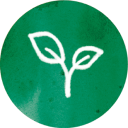Day 21
Rearing of a juvenile salmon and releasing it into the Rhine
 A daycare place for endangered fish
A daycare place for endangered fish


Preparing small salmon and trout for freedom


Uli Beyer, Präsident des Fischereiverbands NRW, stellt dir das Projekt im Video vor
need
Raising salmon and trout to safeguard stocks
activity
The non-profit Wasserlauf-Stiftung provides the eggs and raises the young fish in the Rhein-Sieg wild salmon centre for several months
Measurable performance
The number of young salmon and trout measuring 3 to 6 cm that can be released into the wild from May to July
Result
The release into the wild increases the number of adult fish and provides important support for fish stocks
Systemically relevant impact
The stocks of salmon and trout in the Rhine are recovering sustainably and remain stable
background




The good deed
About Germany
Berlin
Capital city
84,482,267
population
as of 2023
52,745.8
Gross domestic product
per capita per year in USD
as of 2023
0.950
Human Development Index
(Human Development Index)
as of 2023/2024




